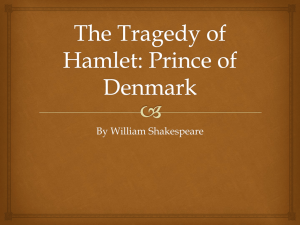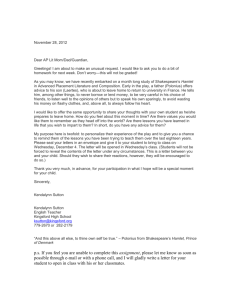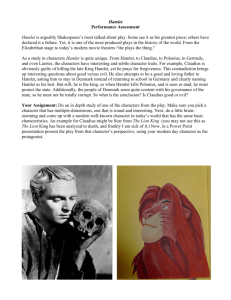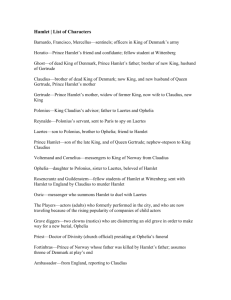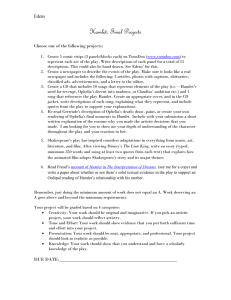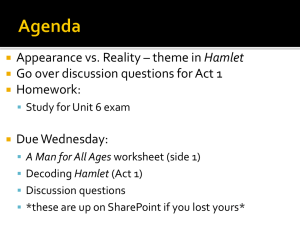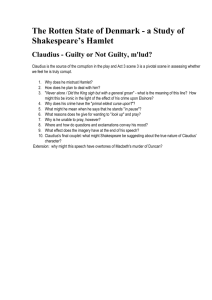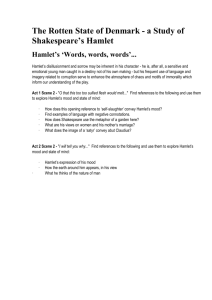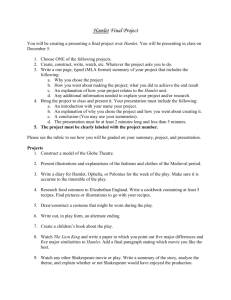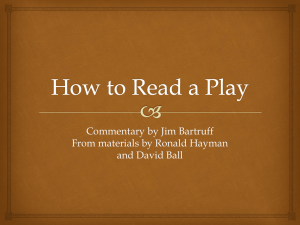Introduction to Hamlet
advertisement
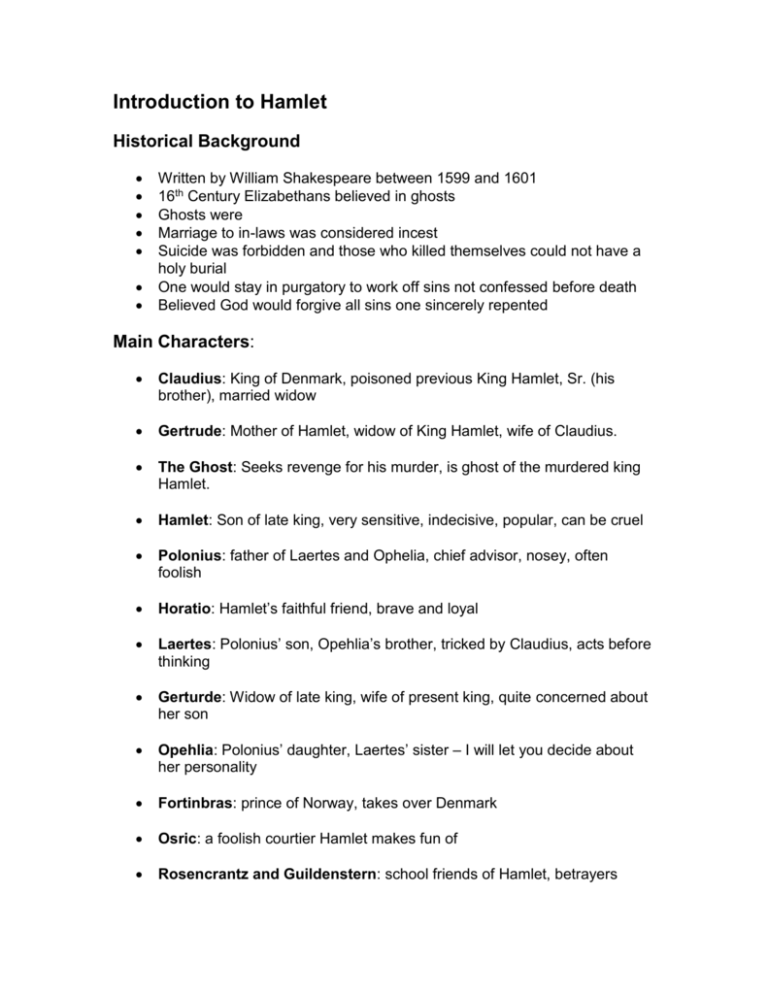
Introduction to Hamlet Historical Background Written by William Shakespeare between 1599 and 1601 16th Century Elizabethans believed in ghosts Ghosts were Marriage to in-laws was considered incest Suicide was forbidden and those who killed themselves could not have a holy burial One would stay in purgatory to work off sins not confessed before death Believed God would forgive all sins one sincerely repented Main Characters: Claudius: King of Denmark, poisoned previous King Hamlet, Sr. (his brother), married widow Gertrude: Mother of Hamlet, widow of King Hamlet, wife of Claudius. The Ghost: Seeks revenge for his murder, is ghost of the murdered king Hamlet. Hamlet: Son of late king, very sensitive, indecisive, popular, can be cruel Polonius: father of Laertes and Ophelia, chief advisor, nosey, often foolish Horatio: Hamlet’s faithful friend, brave and loyal Laertes: Polonius’ son, Opehlia’s brother, tricked by Claudius, acts before thinking Gerturde: Widow of late king, wife of present king, quite concerned about her son Opehlia: Polonius’ daughter, Laertes’ sister – I will let you decide about her personality Fortinbras: prince of Norway, takes over Denmark Osric: a foolish courtier Hamlet makes fun of Rosencrantz and Guildenstern: school friends of Hamlet, betrayers Setting Denmark – a castle in Elsinore Open plain in Denmark A churchyard Some Motifs Revenge: Hamlet is to take revenge on Claudius for Hamlet, Sr.’s murder. Will he? Mortality: What is the meaning of life? Appearance versus Reality: Claudius lies constantly, Polonius spies, Ophelia lets herself be used. Concealed disease – of body and of mind. Corruption: something is rotten in Denmark Madness: Hamlet’s behavior, Ophelia’s inability to cope, Gerturde’s “love” for her son Sexuality and incest: Watch for the recurring inferences Some Literary Elements and Structure Imagery – word pictures of disease and decay (graveyard scene) Frame story – the theater “dumb show” within the larger story. It “mirrors” the main story. Allusions – historical, mythological, Biblical Style – blank verse. Iambic pentameter with end rhymes, relieved by passages of prose. Puns and word play – watch for these! Soliloquies – long solo speeches. (“To be or not to be…”) A tragedy – Maintains many elements of a classic tragedy, as defined by Aristotle.
